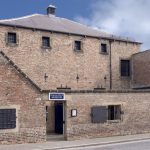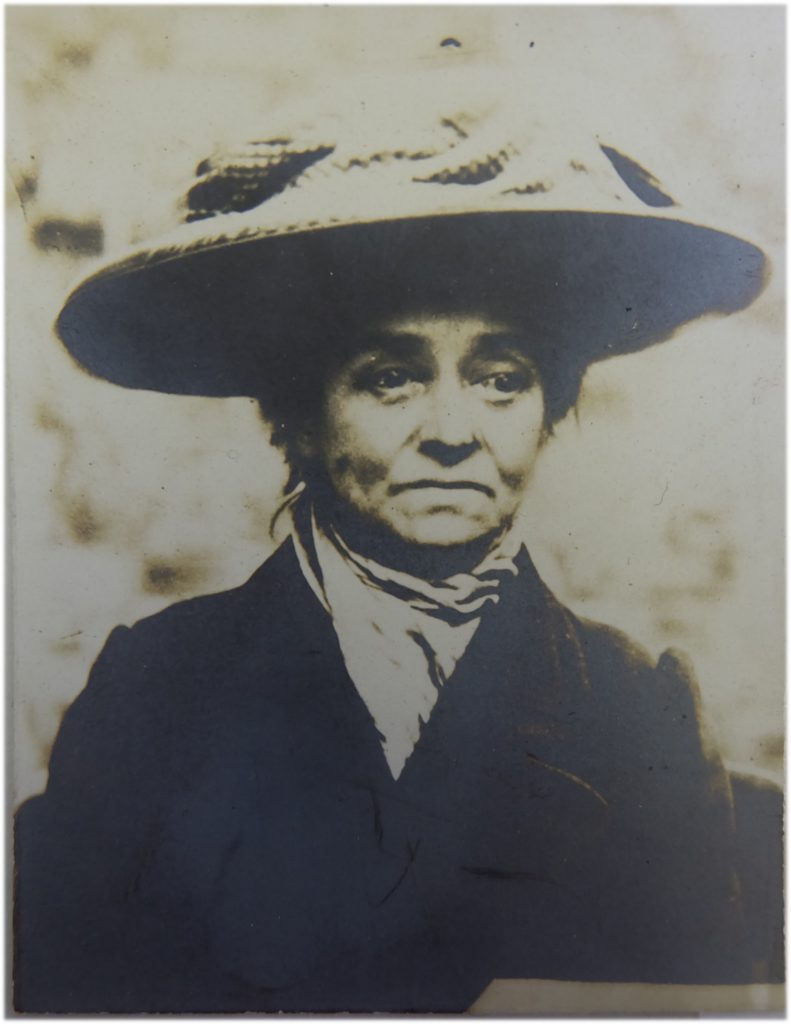The record sheet records basic details about Mary Clancy, along with the crimes she committed between 1895 and 1914. It provides the date, the name in which the person was convicted, the place of the offence, the offence itself and the sentence.
You can see Mary Clancy’s criminal record sheet on display in our current exhibition, Rogues & Vagabonds, which runs across all three of our museums. The record sheet is on display at the Prison & Police Museum. The exhibition explores historic homelessness through the lens of the workhouse, prison and court system, as well as contemporary homelessness.
Criminal record sheets such as this one can give us a detailed picture of what people looked like. Not only do they often include a photograph, they also record details about the offender’s appearance. Mary Clancy is recorded as having a dark complexion, black hair and brown eyes. She was 4 feet 11 inches in height and her little finger on her right hand was broken.
Mary was born in 1866 in Hull. She was married and the record sheet is annotated with a note stating that her husband’s criminal record sheet was on page 71A. Unfortunately, we don’t have this record sheet in our collections.
Mary and her husband, William, were hawkers, or travelling salespeople. They were repeatedly arrested for crimes such as begging, sleeping out, and being drunk and disorderly. Their arrests were made in various locations across East and North Yorkshire. In most cases, Mary was sentenced to pay a fine or sent to prison to carry out hard labour.
The Vagrancy Act of 1824
Almost all of Mary Clancy’s arrests and convictions were made under the Vagrancy Act of 1824.
This Act was introduced as a way of addressing the problem of vagrancy, which had peaked after the end of the Napoleonic Wars in 1815, as many soldiers were discharged and left searching for work.
The Act made it illegal for anyone to be a Rogue & Vagabond, or an Idle & Disorderly Person. The definitions included many different types of behaviour, including:
Rogue & Vagabond
Persons pretending to tell fortunes, using any subtle craft, &c. to deceive and impose on his Majesty’s subjects Persons found playing or betting at unlawful games Persons wandering abroad and lodging in out-houses, &c. or in the open air, and not giving a good account of themselves Persons placing themselves in streets, &.c. to beg or gather alms, and endeavouring by the exposure of wounds and deformities to effect the same purpose Reputed thieves found frequenting places of public resort, with intent to commit felony on persons or property of his Majesty’s subjects, and not being able to give a satisfactory account of themselves
Idle and disorderly person
Persons able to work, and wilfully refusing so to do, by means whereof they and their families become chargeable to parishes Persons threatening to run away and leave their wives or children chargeable to parishes Common prostitutes or night-walkers wandering in the public streets, not giving a good account of themselves
The Act also defined incorrigible rogues as persons who have been convicted of being rogues and vagabonds, and discharged, and found committing the same offence again.
Police officers could arrest anyone committing these crimes, as well as anyone who they believed intended to commit the crimes. They needed the testimony of only one witness, usually the arresting officer himself.
The sentence for crimes under the Vagrancy Act was usually a fine and if the person couldn’t pay, which was common, a short sentence of hard labour in a prison or house of correction.
Newspaper reports
Mary Clancy and her husband were repeat offenders and they were well-known in East and North Yorkshire. The local newspapers regularly reported on their court appearances, providing us with further details of their behaviour. The following are some of those newspaper reports:
Beverley and East Riding Recorder, 18 May 1907 “DRUNK AND DISORDERLY – Elizabeth Cannon, who said she came from Selby, pleaded guilty to a charge of being drunk and disorderly in Norwood in the early hours of Sunday morning – She was fined 7s 6d and costs or 14 days and not being able to pay, she went to prison. Mary Clancy, whose original home is Hunmanby, was charged with sleeping out:- Mr Knight, the Chief Constable, observed that the defendants had been wandering abroad for some time past; the town was full of women of this character. PC Carr said he found Clancy sleeping in the grounds of Hengate House. She had a bottle of rum and a basket of eatables in her possession. She gave no explanation of her conduct so the constable brought her to the police station. She was fined 7s 6d and costs or 14 days and also went to prison in default.”
Hull Daily Mail, 21 August 1909 “DRUNKENNESS: William Clancy and Mary Clancy, his wife, were charged with being drunk and disorderly, and were fined 10s and costs, or 14 days.”
Hull Daily Mail, 5 May 1910 “LICENSEES TO BLAME. DRIFFIELD MAGISTRATES’ COMMENTS (FROM OUR OWN CORRESPONDENT) A magistrate’s outspoken comments were the feature of a charge of drunk and disorderly conduct preferred against William Clancy and Mary Clancy, his wife, elderly tramping hawkers, at Driffield on Wednesday. P C R Wilson stated that about 8.30 the previous evening both prisoners were drunk and disorderly at Nafferton. He received many complaints about them. Their language was very bad indeed and the village was in uproar. Witness had to procure a cart to convey them to Driffield. The female prisoner in pleading for leniency said she belonged to Hunmanby.
Questioned as to what amount of drink he had had and where he got it, the male prisoner said he had some before he left Driffield, as did his wife, and they had more drinks in the whole of the five public houses in the village of Nafferton. The constable said their condition was such that the publicans of the village all refused to serve them eventually.
Mr C Smith (the presiding magistrate): There would be no drunkenness if the licensees were to exercise more care and judgement. They are the people who want bringing here.
Superintendent E Jackson said it was a very hard matter for innkeepers to deal with the class of people that prisoners belonged to. They called for drink and if they did not get it they abused the innkeeper.
The Clerk: That only shows that the licensees want to exercise more watchfulness.
The female was discharged and the male prisoner was sent to prison for seven days.”
Bridlington Free Press, 4 April 1913 “GONE TO JOIN HER HUSBAND: Mary Clancy, a little woman known in the town as a hawker, was charged with having been about midnight on Monday drunk and disorderly in St John-street, near Brett-street. She was attracting people by her shouting and swearing and obscene language, one or two of her choicest flowers of her rhetoric being exhibited by Sergt. Huddlestone, whose good advice to go to her lodgings she ignored and preferred to go to the police station, where she began again, if indeed she had ever fairly let off. She was fined 5s and costs or 14 days. She asked for time in which to pay.
Superintendent East said he must object. She had no permanent place of abode. Her husband had in 1911 been fined for drunkenness and had been given time to pay. He had not paid and on Monday he had been arrested and taken to Hull Gaol, where he would remain for fourteen days.
The Chairman said the Bench must refuse the application. She would have to go to prison. She had been there before.”
Daily Gazette for Middlesbrough, 5 June 1914 “Two tramping hawkers, William Clancy and Mary Clancy were charged at Redcar today with sleeping out at Saltburn. On Wednesday they were found sleeping in a stable at Old Saltburn and the police stated that on Monday and Tuesday they were begging and drinking in Saltburn. Clancy pleaded for leniency and said he had had 28 years’ service in the Army. The Bench decided to discharge defendants on their promising to leave the district.”
 Prison & Police Museum
Prison & Police Museum